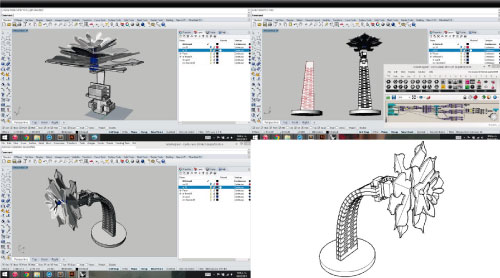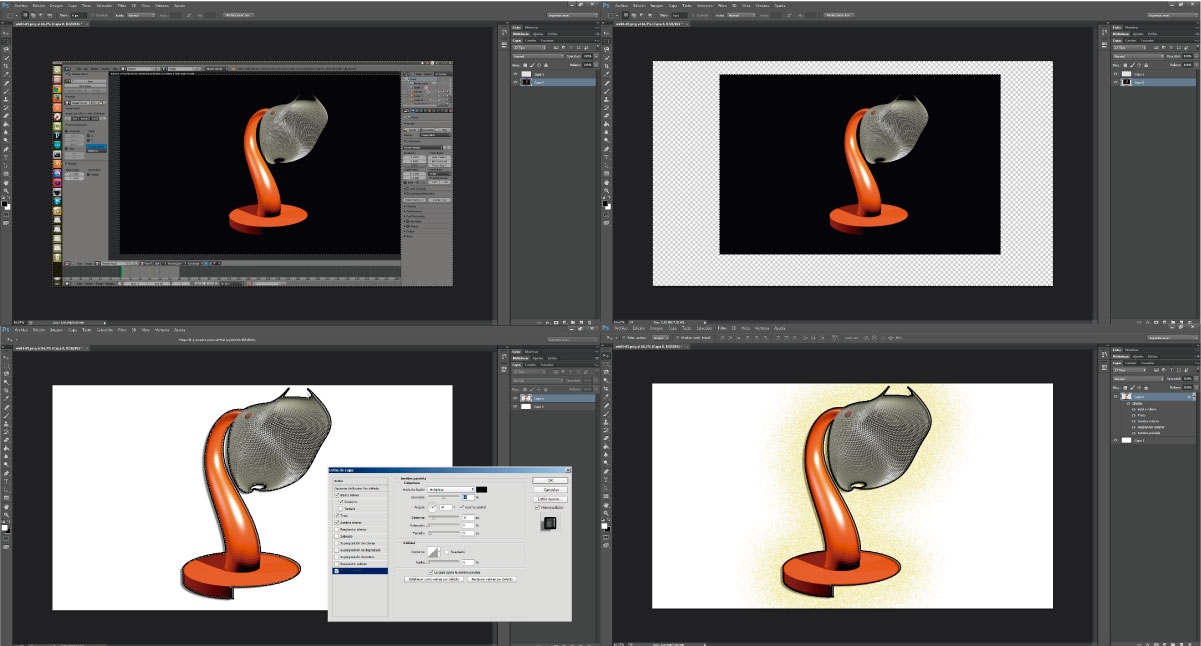wk.02-Computer aided design
Exploration of the formal concept (2d software)

In this assignment i created the digital sketches of the first formal idea of the superior piece of the element which covers the led light, where i part from an image of a lotus flower taken from the internet, silhouette that i traced with the inkscape software. The file was saved as a .svg file, and therefore i imported it to the illustrator software (this last software i have used it, known it and experienced it) to improve details like joints between curves, lines thickness and the model’s scale. it’s good to mention that both of these interfaces are really similar, which was a positive aspect to work easily with “inkscape” and “illustrator”.
3d software explorations

In this case i explore the 3d modeling in the Autocad Software, for my and for the most people the software potential is the 3d modeling, but the most recent versions have great tools for the 3d modeling, how the "loft", and other tool of surface creations, and also the together work of the different planes or visualizations, allowing me create the vectors or curves "schematics" for the drawing my 3d sketch model, all this thinking in the lamp model for my possible final project.
A little more of 3d explorations software

In this case i worked in the Sketchup software, a software that for my is for do models in architectonic scale, but not very efficient in the develop the building model, mechanical piezas "of great detail level", or precise parts. For this i think that is named Sketchup, and although I drawed a shape in the software of my possible final project, I don't think that is the pertinent software for the develop my final project, because my object is a small detail element.
Initial digitization of the possible final shape (3d software)

Taking week 1 work as a base, i created a 3d model of the basic idea where the used interface was blender; in my opinion this software has more potential regarding to visualization and animation, because the modeling process was slow compared with the interface “cad”. The prior let me play and create textures, shades and lights for the created model; in this point i want to be emphatic, because i think that the focus of the curse is oriented to fabrication and development of the project.

After working with an unknown 3d software, i proceeded to elaborate the cover of the lamp model with the Rhinoceros3d software, taking the vector of ink scape and illustrator as a base, where the experience of the modeling process was a lot more successful due to the previous knowledge of the software.

Continuing with the 3d exploration, i worked with the free software freecad, experience that provided me a new tool of parametric modeling which a huge potential for the development of mechanical pieces and elements with variable and different geometry, but also really complex and precise on the design pattern.
Digital sketching of the final project

Closing the process of software exploration i sketched and modeled the first approach of the final project, taking all the experience of working with all the software’s, to join them in one single piece, produced in the “rhinoceros” software, and it’s complement Grasshopper (to create the pattern of flexible texture). The prior to show the initial shape of the model, and its intention of movement, flexibility and light management.
The image editing

Though this step is not really important for me, because i prefer the fabrications and manufacturing softwares, but i proved the Photoshop software and this is util for the image organization and his editions, this for the presentations,my image structure web, and others case in relation with the graphic elements, for this I edited a image of a previous model, and added some curious details as edges, shadows, lights and also I cut the image format and added other background.
Initial simulation of the project
Like in the prior aspect, i worked with the Grasshopper software, with its complement nudibranch -used to develop orbits and contents in real time-. This last one can be downloaded for free, and it was created by Marios Tsiliakos